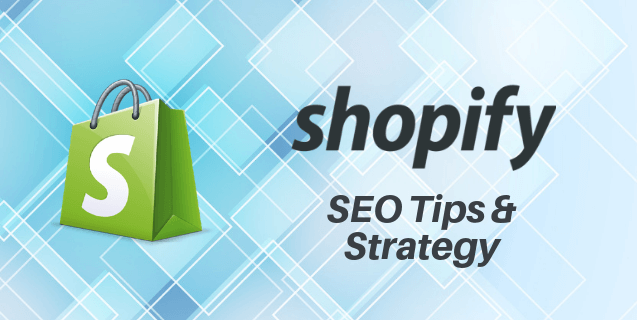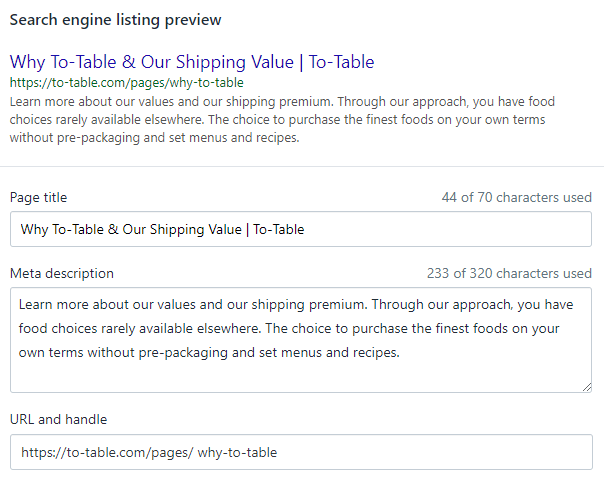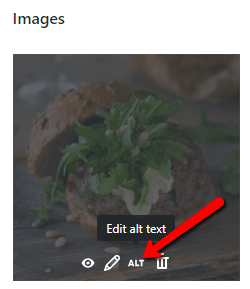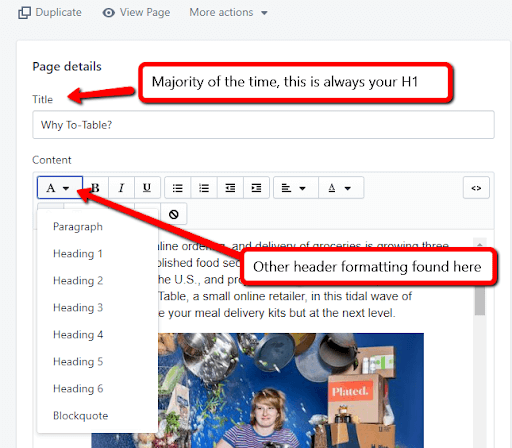The platform you use for your e-commerce brand matters. Not only can using the right platform make your work easier, but it can also help you boost your presence online and in search results. Shopify is becoming one of the most popular e-commerce platforms, and for good reason. It offers easy management, integration, and customization (many features do not require coding!), while also making it easy to optimize your site for better search results, maximum traffic, and higher sales.
Shopify Basics: To Use or Not to Use
If you’re exploring e-commerce platforms for your online or brick and mortar business, it’s important to know which platforms are actually going to help you show up in Google. So how good is Shopify for companies that are new to e-commerce or exploring new platform options?
In general, Shopify is great for e-commerce businesses looking for a fast, responsible, cost-effective platform. They offer over 100 professional templates, including many free options. Shopify may be ideal for your e-commerce business if you…
- Need a flexible e-commerce platform
- Prefer easy backend administration
- Want to integrate with Facebook, Instagram, and other sales channels
- Want SEO features
- Want to avoid coding (or paying someone to do it for you)
- Need a fully secure payment gateway built-in
- Want easy integration with point-of-sale in-store systems
- Expect a blog with easy setup and automatic integration
But which companies should not use Shopify?:
- Those who need a super customized e-commerce store. Keep in mind that Shopify is fully customizable but Shopify Liquid (their template language) is foreign to most.
- Companies with huge inventories
If you make the switch to Shopify, you’ll need to make sure to use the SEO features and other great tools to get the full impact of the platform and your efforts. Below, we provide basic recommendations and advanced strategies for leveraging the Shopify platform to maximize your SEO rankings.
How to Use Shopify to Boost Your Brand’s SEO
Once you’ve made the switch to Shopify or have chosen it for your initial launch, it’s time to start optimizing your inventory within the platform. This means focusing on several different elements:
- Page titles and meta descriptions. This is where you’ll use your keyword research. Consider each keyword and make sure each page you’re optimizing is unique from the next — specifically in regards to near-identical items. Page titles have high SEO value and should be approximately 60-70 characters (including spaces) and include your brand & primary keyword or product name. Meta descriptions are your “elevator pitch” in search results to get users to click to your site and should not exceed 300 characters.
- Example 1: Core page
-
- Example 2: Product Page
- Image ALT text. As an online shop, your sales are highly reliant on visuals. Google doesn’t scan images the same way they scan text, so you need to optimize the image alt text. This is supremely easy in the Shopify platform. Image ALT text should contain keywords and phrases relevant to the image and page to which it is connected. If it’s a product image, be sure to include your brand name!
- Proper H1s and other header tags. The H1 is generally provided in the header bar of each page you create, while H2s and other header tags are used to break up the text, add structure to a page, and indicate keywords in code. “Headers” that are just increased font sizes or bolded styles are not H1 or H2, etc. You need to use header code formatting (see image below). If your Shopify template isn’t creating the header style or code you need, you’ll need to edit your theme CSS. H1s, in general, should be about 60-70 characters and they should be descriptive.
- URLs. When possible, use the main keyword or product name in your URL. This makes it easy for human eyes to read, as well as crawlers. Shopify makes redirecting URLs easy, so even if your auto-generated URL is not what you want, you can easily redirect it. URLs are chosen when you create the page and can be edited in the “Search engine listing preview” section”. Keep your URLs descriptive and user-friendly, yet not overstuffed with keywords.
- Internal and external linking. Your pages should be connected to each other and to other websites. Internal linking is easy on product pages and blogs where you can link between related pages. If you have a blog, internal and external linking is critical. When linking internally or externally, always use anchor text that is succinct and not misleading.
Within the Shopify platform, you can also integrate your pages with Google Analytics, the Facebook Pixel, several social shopping feeds, and Amazon. This gives you the best tracking for your products and metrics to show where your products are performing best online. It also gives you the ability to market the products in the places where your audience already spends their time. This will allow customers to review the products. In today’s day and age customer reviews can make or break one’s business hence they are very important. Here’s an article on WebLime about how to add reviews on Shopify.
Other SEO Factors to Keep in Mind
One element many e-commerce owners neglect when focusing on Shopify SEO is usability. It’s not all about search; it’s also about what people find when they click through to your website. Keep the elements below in mind when you are optimizing your Shopify shop.
Non-mobile-friendly sliders. Use a hero layout instead of sliders on your homepage because sliders are not very user-friendly on mobile. Google’s Mobile First Index encourages fast load times and easy mobile use, which is why this is an important consideration for your Shopify SEO.
XML sitemap. Just because Shopify automatically creates your XML Sitemap doesn’t mean Googlebot automatically finds it. Don’t forget to add it to your Google Search Console profile. Without submitting it, it’s not guaranteed Googlebot will crawl your site. Even though Google rules the roost, don’t forget about Bing Webmaster Tools, as well.
Out of stock redirects. As with any e-commerce site, you’ll need to properly handle products that go out of stock or are no longer available. An “out of stock” page should be clear and obvious with suggestions for similar products, and old products are typically handled via a redirect to the most relevant page. This increases visitor retention, an influencing factor in your SEO.
Taking Your Shopify SEO to the Next Level
Once you’ve implemented the basic recommendations above, you’ll likely see a boost in traffic, sales or rank in search engines (hopefully all of the above). But there are also a few things you can do with Shopify to really stretch your SEO impact. While these are “higher level” or advanced Shopify SEO tactics, they are boosts to your site’s overall performance. Note that they may take a little bit more familiarity with the platform and code to successfully manage.
Additional Apps
There are countless Shopify apps (like plugins) that allow your business to add extra elements to your site and/or improve site speed. Some of our favorites include:
-
- Hypervisual Page Builder to build marketing landing pages
- ReferralCandy to make referrals easy
- Image Optimizer for image compression and optimization (Google loves fast sites!)
Utilize the Theme Editor
If you want to maximize your specific theme and how it works for your brand, we recommend playing around with Shopify’s theme editor. This is where you can add breadcrumbs, custom fields, extra info, and a number of other components that can impact your SERP result and SEO ranking.
Structured Data
Add structured data to e-commerce pages, either through an app or manually into your Shopify Liquid file(s). Structured data is crawled by search engines and makes it easier for those crawlers to identify what is on the site and what will display on your search result. This is pretty simple, as some themes might already do this for you, so test your site before investing in other tools.
Common Issues You May Encounter With Shopify
No platform is perfect. While Shopify obviously has extensive benefits, for those who are looking for a more robust and dynamic SEO-focused e-commerce platform, there are a few Shopify shortcomings of which you should be aware.
Tag Pages
For e-commerce websites, utilizing tags is a great and easy way to sort things on the backend and for users on the front-end— i.e. product filtering. However, tag pages cannot be optimized for SEO and cannot contain unique content in Shopify. This is because the tag setup typically creates dynamic URLs with a static H1 and content but the product list changes. To resolve this issue, we suggest planning ahead and creating static, strategic collection pages, or you can use an app or edit your shop’s theme. The tag setup can also cause a high number of indexed pages and duplicate content errors if they are not handled properly via the Robots.txt associated with the theme.
Forced URL Structure
When it comes to your URL structure, what you see is what you get with Shopify. This is not always considered a problem, but just know and remember you can’t customize URL structure other than the slug for a particular page. You cannot change this by changing templates or even upgrading to Shopify Plus; it’s just the current reality with this specific platform.
Why would this be a problem? On a traditional e-commerce website, for example, your URL for a returns page would likely be exampleshop.com/returns/. But because of the forced structure on Shopify, this becomes exampleshop.com/pages/returns/. That “/pages/” piece is what will always remain.
Locked Robots.txt
Simply put, you can’t control the robots.txt for Shopify domains/sites. Instead, have to know how to use meta tags/meta robots on individual pages.
Using Shopify for Your Brand
Whether you choose Shopify for your brand’s site or not, you’ll need to find a platform that does allow you to optimize pages for users as well as search engine crawlers. Shopify is a very useful and user-friendly platform that we find helps many brands launch their e-commerce sites with less complexity and more impact. Using the SEO tools found within Shopify’s platform, you should be able to see higher ranking in search, better traffic, and (most importantly) more sales.





